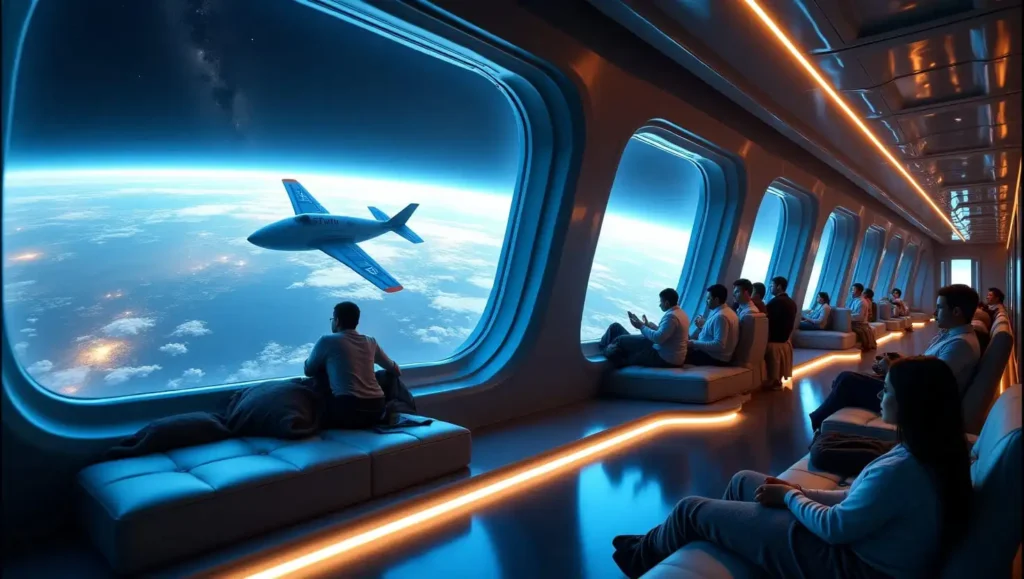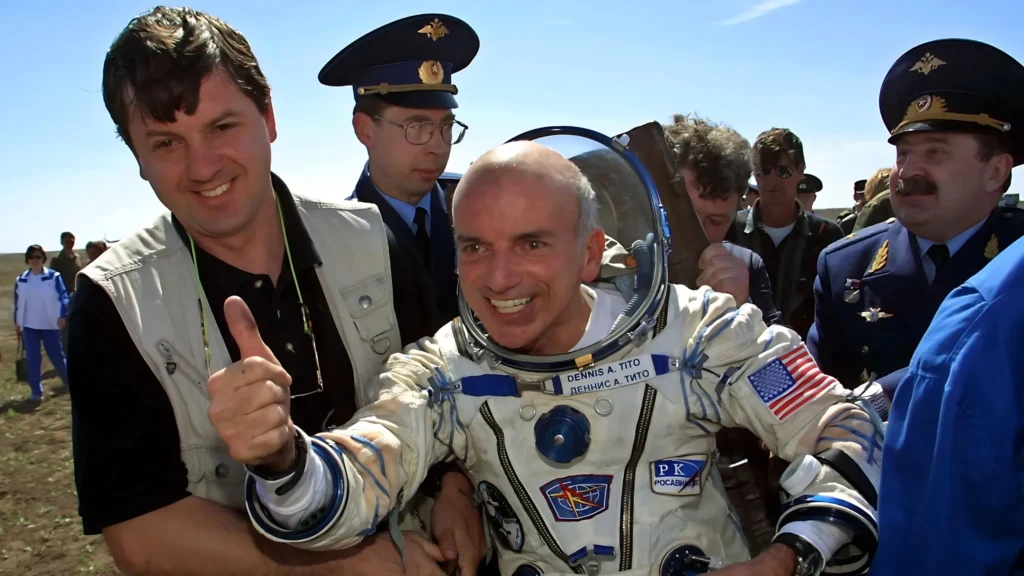Close your eyes for a moment and imagine yourself floating in space, gazing out of a spacecraft window at the dazzling blue orb that is Earth. For most of history, this experience was reserved for highly trained astronauts. Today, however, the dream of traveling beyond our atmosphere is becoming a reality for civilians, thanks to space tourism.
In this guide, we’ll unravel everything you need to know about space tourism—its history, how it works, types of experiences available, costs, requirements, safety, and its exciting future. Whether you’re simply curious or seriously considering booking a seat on a spacecraft, this beginner’s guide has you covered.
What Is Space Tourism?
Space tourism refers to commercial travel into outer space for recreational, leisure, or business purposes. Unlike traditional space exploration missions, which focus on scientific research or government objectives, space tourism is about giving civilians the chance to experience space firsthand.
At its core, space tourism is about pushing boundaries—both literally and figuratively. It challenges our notions of travel, technology, and human potential, making the extraordinary accessible.
A Brief History of Space Tourism
The journey to space tourism wasn’t an overnight success. It took decades of innovation, daring individuals, and private investment to bring us where we are today. Let’s explore the key milestones.
1. Early Concepts and Imagination (1960s–1980s)
The 1960s were the golden age of space exploration, with NASA’s Apollo program captivating the world. Amid this excitement, the idea of space tourism emerged in speculative fiction and early aerospace concepts. However, the technology to make it feasible was still decades away.
2. The First Space Tourist: Dennis Tito (2001)

The turning point came in 2001 when Dennis Tito, an American millionaire and former NASA engineer, became the first private citizen to travel to space. Tito paid $20 million to fly aboard a Russian Soyuz spacecraft to the International Space Station (ISS). His journey proved that civilian space travel was possible and set the stage for a new industry.
3. The Rise of Private Space Companies (2000s–2010s)
The early 2000s saw the emergence of private companies like SpaceX, Virgin Galactic, and Blue Origin, each with a vision of making space travel accessible to more people. These companies focused on developing reusable rocket technology to lower costs and increase accessibility.
Key milestones during this period include:
- SpaceX’s Falcon 1 becoming the first privately developed rocket to reach orbit (2008).
- Virgin Galactic’s SpaceShipOne winning the Ansari X Prize for suborbital spaceflight (2004).
4. The Modern Era of Space Tourism (2020s)
Today, space tourism is a thriving industry with multiple companies offering commercial spaceflights. Notable recent milestones include:
- Virgin Galactic’s VSS Unity: Richard Branson became one of the first civilians to fly to the edge of space in July 2021.
- Blue Origin’s New Shepard: Jeff Bezos and other passengers, including actor William Shatner, completed successful suborbital flights in 2021.
- SpaceX’s Inspiration4 Mission: In September 2021, an all-civilian crew spent three days orbiting Earth, marking a new chapter for orbital space tourism.
Types of Space Tourism
Space tourism isn’t a one-size-fits-all experience. Depending on your budget, time, and level of adventure, there are three primary types of space tourism to consider:
1. Suborbital Space Tourism
Suborbital flights take you to the edge of space (approximately 100 kilometers or 62 miles above sea level) before returning to Earth.
What to Expect:
- A brief but exhilarating journey lasting 1–2 hours.
- A few minutes of weightlessness as the spacecraft reaches its peak altitude.
- Stunning views of Earth’s curvature and the blackness of space.
Key Players in Suborbital Tourism:
- Virgin Galactic: Offers flights aboard the VSS Unity, departing from Spaceport America in New Mexico.
- Blue Origin: Operates the New Shepard spacecraft, providing a fully automated flight experience.
Cost:
- Tickets typically cost $200,000–$250,000, making it the most affordable form of space tourism.
2. Orbital Space Tourism
Orbital space tourism takes travelers into Earth’s orbit, where they can spend days or weeks experiencing life as an astronaut.
What to Expect:
- Extended periods of weightlessness.
- Unparalleled views of Earth from space.
- Living aboard spacecraft like the International Space Station (ISS) or private space stations currently under development.
Key Players in Orbital Tourism:
- SpaceX: Its Dragon spacecraft has successfully transported civilians on orbital missions.
- Axiom Space: Plans to build private space stations tailored for tourism and research.
Cost:
- Prices start at $50 million, reflecting the complexity and duration of orbital missions.
3. Lunar and Deep-Space Tourism
For the ultimate adventure, lunar tourism and interplanetary travel are on the horizon.
What to Expect:
- Flybys of the Moon, with breathtaking views of its surface.
- Future missions may include landings or even journeys to Mars.
Key Players in Lunar Tourism:
- SpaceX Starship: Currently in development for lunar flybys and future Mars missions.
Cost:
- Lunar missions are estimated to cost upwards of $100 million, though prices are expected to decrease over time.
Who Can Go to Space?
Space tourism is gradually becoming more inclusive, but there are still certain requirements:
1. Age Limits
Most companies require participants to be at least 18 years old. There is no upper age limit, provided participants meet health criteria.
2. Health and Fitness
While you don’t need to be an elite athlete, good physical health is essential. Space travelers undergo medical screenings to ensure they can tolerate the stresses of space travel, including:
- High G-forces during launch and reentry.
- Exposure to microgravity conditions.
3. Training Requirements
Training programs vary depending on the type of mission but typically include:
- Simulated microgravity experiences (e.g., parabolic flights).
- Emergency drills and safety procedures.
- Familiarization with spacecraft systems and operations.
The Cost of Space Tourism
One of the biggest barriers to space tourism is cost. Here’s a breakdown of current pricing:
- Suborbital Flights: $200,000–$250,000 per ticket.
- Orbital Missions: $50 million or more per passenger.
- Lunar Tourism: Estimated at $100 million or higher.
While these prices are steep, competition and technological advances are expected to drive costs down, making space tourism more accessible to a wider audience in the coming decades.
Safety in Space Tourism
Safety is a top priority for space tourism companies, and advancements in technology have significantly reduced risks.
1. Testing and Certification
- Companies like SpaceX and Blue Origin conduct rigorous testing of their spacecraft to ensure reliability.
- Safety protocols are reviewed and certified by regulatory bodies such as the FAA.
2. Emergency Preparedness
- Training programs prepare tourists for potential emergencies, such as cabin depressurization or fire.
The Future of Space Tourism
The future of space tourism is brimming with possibilities, from space hotels to interplanetary travel.
1. Space Hotels
Companies like Orbital Assembly are developing luxury space hotels with amenities like artificial gravity, private suites, and panoramic views of Earth.
2. Sustainability in Space Travel
Efforts to minimize the environmental impact of rocket launches include:
- Reusable rockets, like SpaceX’s Falcon 9.
- Alternative fuels and eco-friendly propulsion systems.
3. Mars and Beyond
SpaceX is spearheading efforts to make Mars colonization a reality, paving the way for interplanetary tourism.
Space tourism is transforming humanity’s relationship with the cosmos, offering everyday people the chance to explore the stars. While it’s still an exclusive and costly endeavor, the rapid pace of innovation suggests that the dream of space travel will one day be within reach for millions.
FAQs
1. How much does space tourism cost?
Suborbital flights cost around $250,000, while orbital missions can exceed $50 million.
2. Is space tourism safe?
Yes, but it carries inherent risks. Companies implement rigorous safety measures to minimize dangers.
3. Can children participate in space tourism?
Currently, most companies require travelers to be 18 or older.
4. How long does a space tourism trip last?
Suborbital flights last a few hours, while orbital missions can last several days or weeks.
5. Will space tourism become more affordable?
As technology advances, costs are expected to decrease, making space tourism more accessible.


